
Owls, a mysterious nocturnal bird of the night, are famous for their unique hunting tactics. The owl’s leg is of great use for hunting. With these legs, they catch prey, fly with prey, and help kill prey. Most owls have down coats, which protect them from the harsh winter cold.
Every year, a large number of people visit the Internet to see the structures and pictures of owls’ legs. Like other parts of the owl’s body, their legs are not easily visible to anyone.
As humans, we first notice the owl’s face. The owl’s legs are unique in their characteristics. In this article, we will take a look at pictures of owl legs, the structure of the legs, and the use of their legs in survival, and give answers to some frequently asked questions about the legs of this nocturnal bird.
Contents
- 1 Owl Legs: A Marvel of Adaptation
- 2 Strong talons
- 3 Flexible joints
- 4 Silent flight
- 5 Fast and deadly strike
- 6 How long are owl legs?
- 7 Structure of the owl’s leg
- 8 Owl legs under feathers
- 9 Owl legs without feathers
- 10 Owl legs long
- 11 Barn owl legs
- 12 Great-horned owl legs
- 13 wet owl legs
- 14 Snowy owl legs
- 15 Barred owl legs
- 16 Skinny owl legs
- 17 Shaved owl legs
- 18 Baby owl legs
- 19 FAQs
- 20 Conclusion
Owl Legs: A Marvel of Adaptation
Owls’ legs are adapted as birds of prey, so their legs are stronger than those of other birds and have interesting designs like those of other birds. Some of their toes are forward and some are backward, i.e., they are designed for hunting prey.
The main joint in an owl’s leg, which we mistake for the knee, is the ankle. Owls have very long legs; their leg structures are called “leggings.” Find the detailed discussion of the owl foot structure below:
Strong talons

Owls’ strong talons are one of the most striking features of their legs. They have curved claws designed to slash prey with precision.
Strong muscles in their talons help them maintain a strong grip on their prey. Owls can catch their prey quickly and efficiently, whether small or large, using their talons.
Flexible joints

Owls’ foot joints are highly flexible, which allows them to rotate their talons with precision. This flexibility helps to get a stronghold of the prey.
It is their ability to rotate their talons that helps them adapt to different hunting situations and makes them versatile predators.
Silent flight

It’s not their legs to help the owls for silent fights directly; rather, it’s the owls’ unique adaptations for silent flight that significantly increase the amount of their prey.
Owls have special feathers that reduce noise when flying, allowing them to stealthily approach prey. The owl’s hunting style, with its strong legs, makes it a great advantage while chasing down prey.
Fast and deadly strike
Owls can strike swift and deadly blows. After detecting its prey, the owl uses its strong legs to launch a swift attack and capture the prey.
The combination of strong talons, flexible joints, and quick reflexes enables owls to attack effectively, ensuring a high success rate in hunting.
How long are owl legs?

Here are the names, scientific names, and approximate leg heights of 40 species of owls found in America:
| Owl Species | Scientific Name | Leg Height |
| Great Horned Owl | Bubo virginianus | 7.5 cm |
| Barn Owl | Tyto alba | 6 cm |
| Eastern Screech Owl | Megascops asio | 3.5 cm |
| Burrowing Owl | Athene cunicularia | 4 cm |
| Snowy Owl | Bubo scandiacus | 9 cm |
| Northern Saw-whet Owl | Aegolius acadicus | 3.5 cm |
| Short-eared Owl | Asio flammeus | 5 cm |
| Long-eared Owl | Asio otus | 6 cm |
| Barred Owl | Strix varia | 5.5 cm |
| Western Screech Owl | Megascops kennicottii | 3.5 cm |
| Elf Owl | Ciccaba virgate | 2.5 cm |
| Flammulated Owl | Psiloscops flammeolus | 3 cm |
| Spotted Owl | Strix occidentalis | 6 cm |
| Northern Pygmy Owl | Glaucidium gnoma | 3.5 cm |
| Great Gray Owl | Strix nebulosa | 7.5 cm |
| Ferruginous Pygmy Owl | Glaucidium brasilianum | 3.5 cm |
| Mottled Owl | Megascops trichiasis | 5.5 cm |
| Mexican Spotted Owl | Strix occidentalis lucida | 6 cm |
| Northern Hawk Owl | Surnia ulula | 6.5 cm |
| Boreal Owl | Aegolius funereus | 5.5 cm |
| Tawny-bellied Screech Owl | Megascops watsonii | 4 cm |
| Whiskered Screech Owl | Megascops seductions | 4 cm |
| Pacific Screech Owl | Megascops cooperi | 4 cm |
| Unspotted Saw-whet Owl | Aegolius ridgwayi | 3.5 cm |
| Tropical Screech Owl | Megascops choliba | 4 cm |
| Rufescent Screech Owl | Megascops ingens | 4 cm |
| Pacific Pygmy Owl | Glaucidium peruanum | 3.5 cm |
| Black-and-white Owl | Ciccaba nigrolineata | 5.5 cm |
| Rusty-barred Owl | Strix hylophila | 5.5 cm |
| Balsas Screech Owl | Megascops Whitney | 3.5 cm |
| Whitney’s Screech Owl | Megascops Gundlach | 3.5 cm |
| Cuban Screech Owl | Glaucidium hardy | 3.5 cm |
| Veracruz Pygmy Owl | Glaucidium sanchezi | 3.5 cm |
| The Central American Pygmy Owl | Glaucidium griseiceps | 3.5 cm |
| Colima Pygmy Owl | Glaucidium palmarum | 3.5 cm |
| Amazonian Pygmy Owl | Glaucidium hardyi | 3.5 cm |
| Choco Pygmy Owl | Glaucidium nubicola | 3.5 cm |
| Great-horned owl | Bubo virginianus | 9 cm |
Structure of the owl’s leg
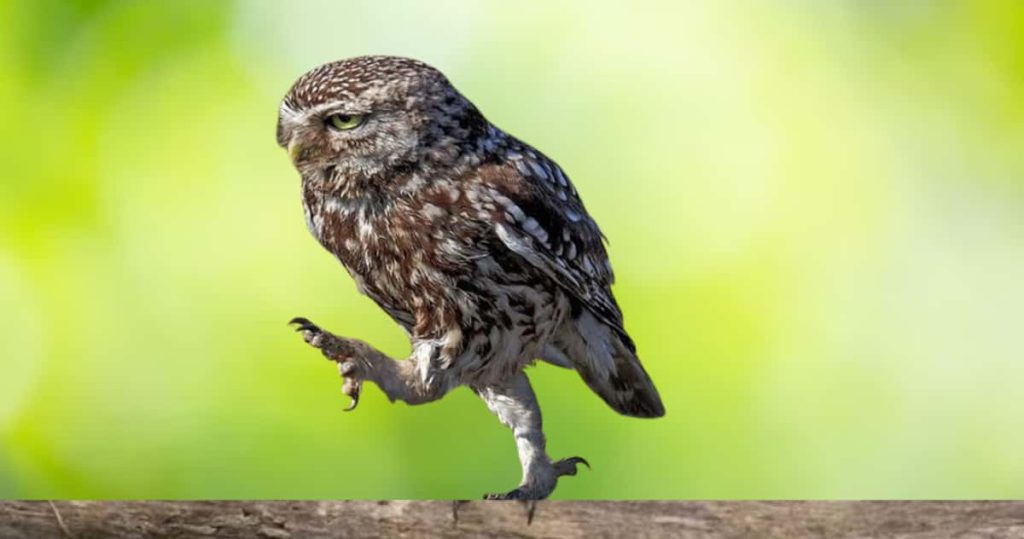
Owls have two large bones in their legs: the tibia and the tarsus. The large bone at the bottom of the leg called the tibia, which is attached to powerful muscles, controls the owl’s movements.
The tarsus is a relatively small bone located below the tibia with a sharp, curved talon at the end, essential for grasping prey.
Owls have four toes on each foot. Each foot has three talons on the front and one on the back, which are essential for catching prey.
Owls can sharpen their talons effortlessly so that they have no difficulty catching their prey in flight.
Owls can’t rotate their knees like we do. However, this structure of their leg helps them catch prey and maintain body balance.
Owl legs under feathers
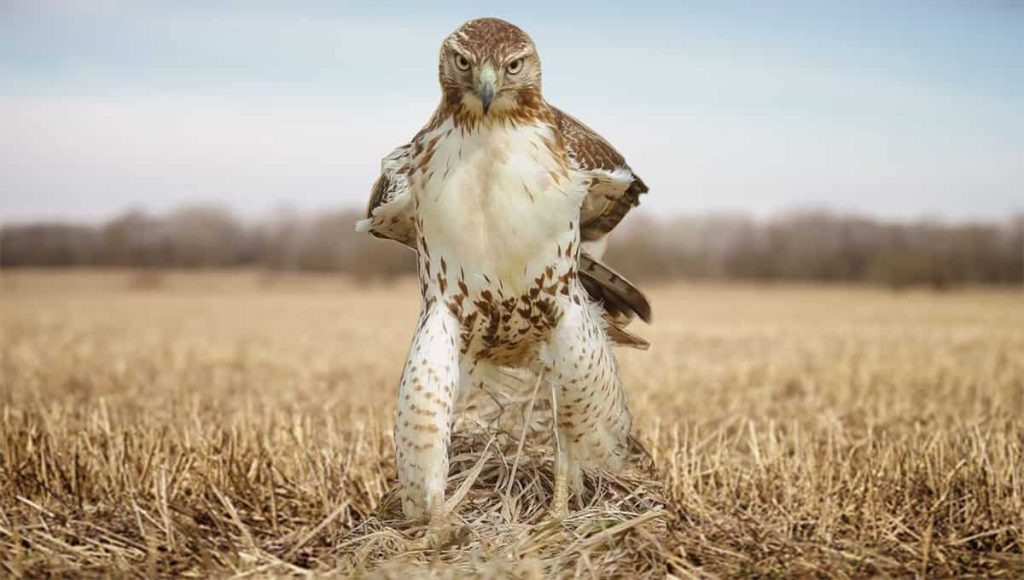
Almost all species of owls in the world have feathers. Owls have feathers to help hide their legs. During the winter, it helps to maintain body temperature and provide camouflage for the owl.
Feathered legs have more meat than non-feathered legs. The role of these legs in catching prey is unparalleled; the feathers on the legs help owls reduce or increase the flow of air.
When it’s time to land, its legs drop slightly, and the feathers on the legs block the wind and slow the owl down, making it easier for them to land. Below is a list of some owls that have feathers on their legs:
- Snowy Owl
- Barn Owl
- Great Horned Owl
- Eurasian Eagle-Owl
- Long-eared Owl
- Short-eared Owl
- Northern Hawk Owl
- Tawny Owl
- Barred Owl
- Northern Pygmy Owl
- Western Screech Owl
- Eastern Screech Owl
- Boreal Owl
- Spotted Owl
Owl legs without feathers
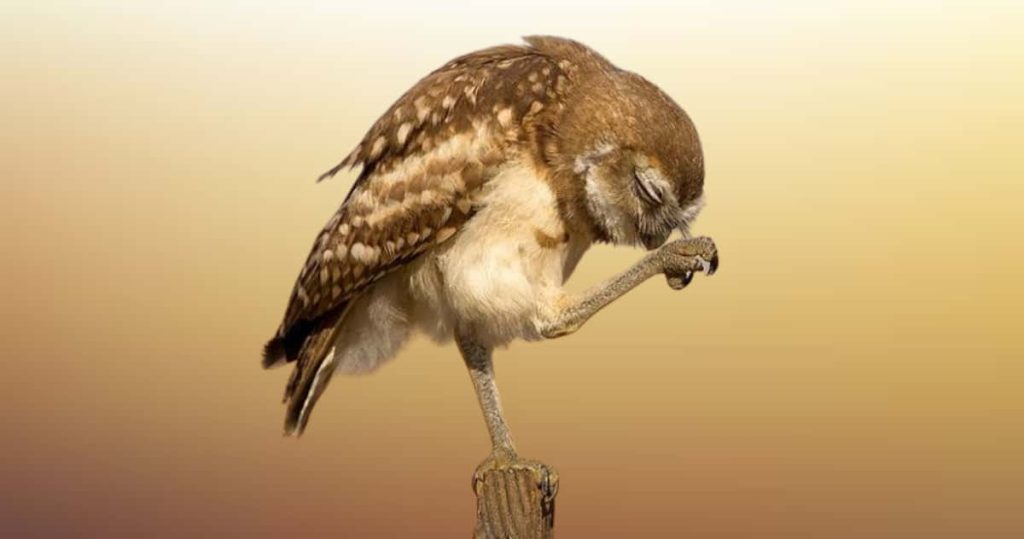
Owls have scales on their legs that protect the soft flesh of their legs. Only a few species of owls in the world have feathers on their legs, so tracing featherless owl species is challenging.
All of these owls can easily approach prey silently with featherless legs during the hunting season.
Usually, winter country owls have their legs covered with feathers to keep their bodies warm during extreme cold. With a featherless leg, survival in the winter becomes difficult. Below are the names of some featherless owls:
- Burrowing Owl
- Elf Owl
- Saw-whet Owl
- Northern Pygmy Owl
- Northern Hawk Owl
Owl legs long
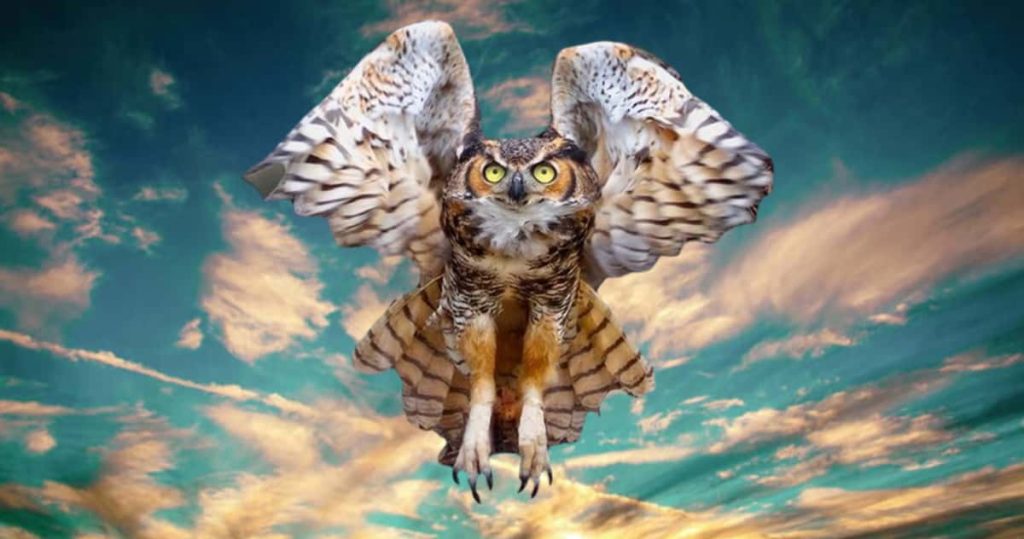
The owl’s long legs help it catch its prey perfectly. However, the length of an owl’s leg can vary depending on the species. Generally, their legs are relatively longer compared to those of other birds of prey.
Relatively longer legs of some species of owls with strong talons, such as the Great Horned Owl, Snowy Owl, Great Gray Owl, etc., help them catch prey or hold onto shelter. Long legs help animals hunt on the ground or in low vegetation.
The length of an owl’s legs varies based on its species, size, habitat, and hunting behavior. Smaller owls have longer legs in proportion to their body size, whereas larger owl species may have shorter legs relative to the size of their body.
Barn owl legs
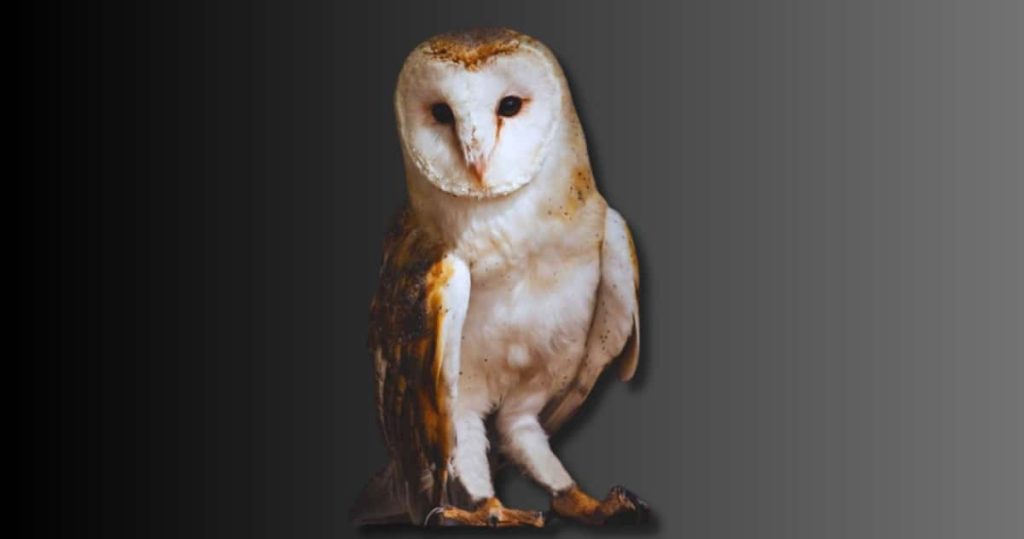
Barn owls are attractive birds with love-shaped faces. Their ability for silent flight, effective hunting technique, sharp talons, and keen hearing make them efficient nocturnal predators.
Barn owls have long and slender legs, most of which are covered in feathers. The length of their legs is approximately 6 cm. Their legs, accompanied by strong talons, help them catch and kill prey.
These talons are very sharp, which helps to grip anything tightly. They use their legs primarily for hunting and catching prey, not for walking or running.
Great-horned owl legs

The great-horned owl is marked as a nocturnal bird of prey, a formidable one. They have a pair of horns, a sharp beak, and yellow eyes. The horn- or ear-shaped part is not a horn or ear; it is a bunch of designed feathers.
They are originally found in North and South America, where they hunt mammals, birds, and skunks. At night, their faces seem ghostly.
With powerful legs and sharp talons, great-horned owls are perfect to grab and subdue prey. The length of their legs is approximately 9 cm.
These large and strong legs covered in feathers help insulate the wind and lessen flight noise, allowing them to catch prey stealthily and efficiently.
wet owl legs

Owls are the types of birds of prey to hunt on land. Their body feathers evolved to adapt to the land environment. But they do not have waterproof feathers like waterfowl like ducks, etc.
Owls usually come into contact with the netting, often during the hunting season or when it rains. Their wet feathers make it difficult for them to fly or hunt.
A strange question may strike the minds of many people: what will the owl’s wet leg look like? Many people are there to mock the owl’s wet leg.
Owls are the birds that have a vital impact on the ecology of our environment, so we should have respect for this wildlife. If you ever see any owls by chance, remember to approach them from a distance without causing disturbance to them.
Snowy owl legs
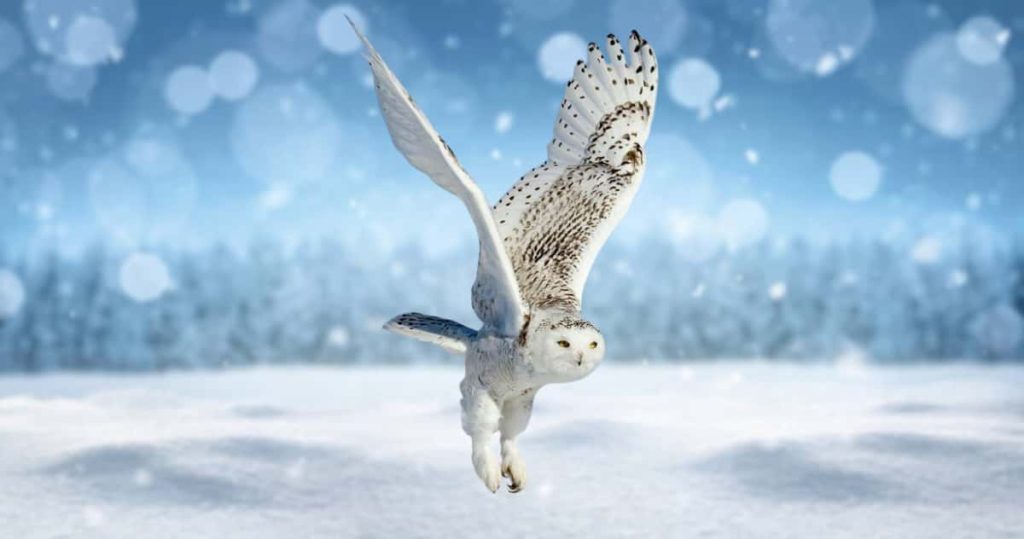
The snowy owl, a large species of predatory owl, is known for its attractive looks. Their feathers are white, which helps them mingle with the snowy environment.
Snowy owls have a leg, the length of which is approximately 9 cm. Their legs are covered with feathers, which protect them from severe cold in snowy conditions.
Their large, strong legs are adaptable to cold environments. The strong talons of their legs help them hunt and kill their prey.
Small mammals, such as lemmings and mice, use their powerful legs to efficiently tackle prey with ease and safety. Many consider it lucky to see this bird, so they look for a snowy owl’s leg on the Internet.
Barred owl legs

Barred owls, like other species of owls, have their legs specially adaptable to help them survive in their natural environment. Their talons play an important role in hunting and catching various animals, like mice, snakes, birds, etc. Barred owls have a foot length of approximately 5.5 cm.
Their legs are zygodactyl, which allows some of their toes to bend forward and some toes backward. The zygodactyl leg helps hold the prey strongly. Their feathered legs, which help them fly silently by reducing wind speed, are also useful in stalking prey.
Skinny owl legs
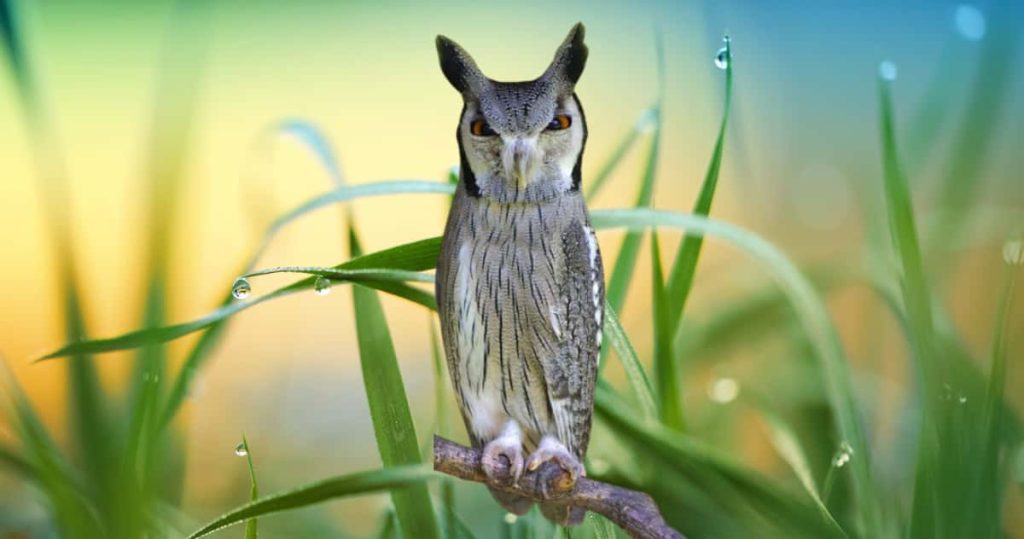
Owls’ legs are adaptable to survive in any environment, whether it is a snowy forest or a desert oasis. Owls have adapted to the environment everywhere. Their size and strength are perfectly proportionate to their bodies. It helps them balance their bodies when they are on the tree or the ground.
Owls have relatively long legs, but this is not noticeable because their body feathers cover most of the legs. However, many people search on the Internet to know whether an owl’s leg is thick or thin. Owls’ legs are neither too fat nor too thin because they are adapted for a perfect hunting style.
Shaved owl legs

Owl without Feathers is viral content mostly searched on the internet. Many people search for shaved owl legs on the internet. But let’s say here that the owl’s legs are not shaved by nature. When owls are affected by a disease called angel wings, feathers on their body fall off, which makes their legs look like shaved legs.
Yet, most of the owls have their legs covered with feathers. There are a few owls, like the burrowing owl, the elf owl, the saw-whet owl, etc., that do not have feathers on their legs.
If you come across an owl with a shaved leg, you can inform your local wildlife experts, as the owl is an infected one. Wildlife experts can treat them.
Baby owl legs

Baby owls are called owlets. When baby owls hatch, their legs don’t have much strength, and it’s difficult to stand properly. Gradually, their legs become stronger with time.
Baby owls have very few downy feathers, and some owls have no feathers at all. Even though the real length of owl legs is larger than their bodies their entire body is covered with small, many-shaped feathers, so their legs do not appear so big.
For small owls, however, they have very short feathers, so their legs appear to be much larger than their bodies. The owlet’s feet later get stronger and more efficient for hunting.
FAQs
Q. Can owls sit cross-legged?
Ans: Owls are not able to sit like us. They have their feet adapted for catching prey and climbing any tree.
Q. What is special about owl’s feet?
Ans: Owls have sharp talons. Some toes on each foot can point forward and backward, helping them catch or kill their prey.
Q. Do owls have knees?
Ans: Owls have knees located far above their legs. Owls’ knees are not visible due to the abundance of feathers.
Q. What do owl legs look like?
Ans: The owl’s legs are relatively larger than its body. Some species of owls have feathered legs, and some species do not. Two webbed legs have four toes for a total of eight toes.
Q. How long is owl legs?
Ans: The size of an owl’s leg can vary between owl species. Their legs usually lengthen up to a minimum of 3.5 cm and a maximum of 11 cm.
Conclusion
I hope our information about owl legs will satisfy your curiosity. Legs are an important part of any bird of prey. Birds that live on grains, fruits, etc. can survive without legs. But as a bird of prey, it can’t hunt or catch without legs. So they have no choice but to starve to death.
If you have curiosity about the legs of a specific species of owl, let me know so I can provide ample information about that.